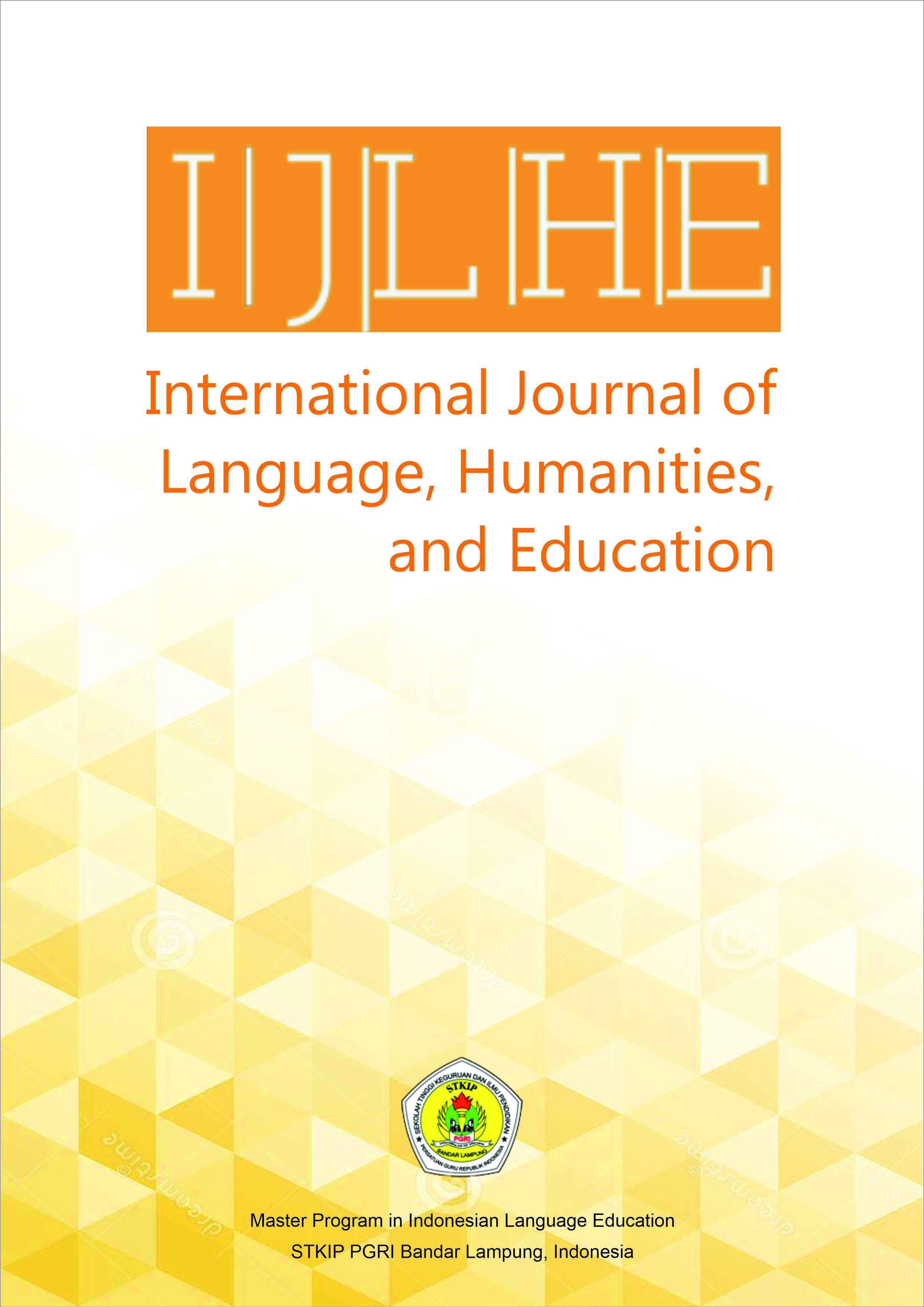Students' Anxiety in Oral Presentations: Factors and Strategies at UIN Raden Intan Lampung
DOI:
https://doi.org/10.52217/ijlhe.v7i2.1620Keywords:
factor, oral presentation, speaking anxiety, strategiesAbstract
This study examines the level of speaking anxiety, identifies contributing factors, and explores strategies to address speaking anxiety during oral presentations in speaking classes among fourth-semester students at UIN Raden Intan Lampung. A qualitative descriptive design was employed, involving 55 English Department students. Data were collected using questionnaires and semi-structured interviews. The Foreign Language Classroom Anxiety Scale (FLCAS), developed by Horwitz et al. (1986), was modified and used to assess Foreign Language Anxiety (FLA). This 33-item, 5-point Likert scale measures students' language anxiety. Results indicate that speaking anxiety is prevalent among the students, particularly during oral presentations, with an average FLCAS score of 36.218. Interviews with six students, representing both low and high anxiety levels, revealed several factors contributing to speaking anxiety. These include negative thinking, lack of preparation, bad experiences, low ability, low confidence, fear of making mistakes, and physical conditions. To mitigate anxiety, students suggested strategies such as thorough preparation, managing negative thoughts, increasing self-confidence, using relaxation techniques, and improving language skills. The findings emphasize the importance of addressing speaking anxiety in EFL classrooms. Educators can create a supportive environment, incorporate activities to build confidence, and teach anxiety management strategies. Institutions should consider workshops on public speaking and anxiety reduction. Additionally, integrating frequent oral practice and personalized feedback into teaching methods can enhance students' speaking performance and reduce anxiety effectively.
References
Al-Nouh, N. A., Abdul-Kareem, M. M., & Taqi, H. A. (2015). EFL College Students’ Perceptions of the Difficulties in Oral Presentation as a Form of Assessment. International Journal of Higher Education, 4(1). https://doi.org/10.5430/ijhe.v4n1p136
Al-Saggaf, M. A., & Azman, A. A. I. binti . (2021). Management and Science University BTESL Students’ Perceptions towards Anxiety in Oral Presentation. Journal of Translation and Language Studies, 2(1), 66–81. https://doi.org/10.48185/jtls.v2i1.192.
Andewi, W., & Hastomo, T. (2022). Effect of Using Flipped Classroom for Teaching Writing Based on Students’ Motivation: A Quasi-Experimental Research. Premise: Journal of English Education and Applied Linguistics, 11(3), 615–631. https://doi.org/10.24127/PJ.V11I3.5511
Asnur, S. M. (2017). The Students’ Anxiety in Delivering English Presentation. Elite : English and Literature Journal, 1(1), 40-53. Retrieved from https://journal.uin-alauddin.ac.id/index.php/elite/article/view/3350
Bulca, M., & Safaei, L. A. (2013). Public presentation: Who fears? Procedia - Social and Behavioral Sciences, 70, 1–10.
Creswell, J. W. (2015). Educational research: Planning, conducting, and evaluating quantitative and qualitative research. Pearson.
Daud, A., Ras, F., Novitri, & Audia, C. P. (2019). Factors contributing to speaking anxiety: A case study of pre-service English teachers. Journal of Educational Sciences, 3(3), 412–422.
Eysenck, M. W. (2013). The cognitive perspective. Psychology Press.
Guebba, B. (2021). The nature of speaking in the classroom: An overview. Middle East Research Journal of Linguistics and Literature, 1(1), 10.
Hastomo, T., & Septiyana, L. (2022). The investigation of students’ engagement in online class during pandemic COVID-19. Jurnal Penelitian Ilmu Pendidikan, 15(2). https://doi.org/10.21831/JPIPFIP.V15I2.49512
Horwitz, E. K., Horwitz, M. B., & Cope, J. A. (1986). Foreign language classroom anxiety. The Modern Language Journal, 70, 125–132.
Istiara, F., Hastomo, T., & Indriyanta, W. A. (2023). A study of students’ engagement and students’ speaking skill: A correlational research. TEKNOSASTIK, 21(1), 1–7. https://doi.org/10.33365/TS.V21I1.2198
Kenoh, A. A. R. III. (2021). A qualitative study on speaking anxiety among pre-service teachers. Journal of Learning and Development Studies, 1(1). 34-39.
Kondo, D. S., & Yang, Y.-L. (2004). Perceived effectiveness of language anxiety coping: the case of English learning students in Japan. JACET Bulletin, 42(July), 15–22. https://ci.nii.ac.jp/naid/110006388885/.
Levin, G. P., & Topping, P. (2006). Perfect presentations. Open University Press.
Miles, M. B., & Huberman, A. M. (1994). Qualitative data analysis: An expanded sourcebook. Sage Publications.
Nouh, N. A. A., Abdul-Kareem, M. M., & Taqi, H. A. (2015). EFL college students’ perceptions of the difficulties in oral presentation as a form of assessment. International Journal of Higher Education, 4(1). 136-150.
Ormrod, J. E. (2011). Educational psychology: Developing learner. Pearson Education.
Rijali, A. (2019). Analisis data kualitatif. Alhadharah: Jurnal Ilmu Dakwah, 17(33). 81-95
Sakale, S. (2019). The important role of teachers’ feedback during speaking activities in Moroccan classes. Arab World English Journal, 10(3), 1. 344-351.
Sari, L. P., Hastomo, T., & Nurchurifiani, E. (2023). Assessing the Efficacy of Duolingo for Acquiring English Vocabulary Skills: Experimental Research. Journal of English Teaching Applied Linguistics and Literatures (JETALL), 6(2), 193–200.
Suleimenova, Z. (2013). Speaking anxiety in a foreign language classroom in Kazakhstan. Procedia - Social and Behavioral Sciences, 93, 1860.
Wilson, C. (2013). Interview techniques for UX practitioners: A user-centered design method. Newnes.













